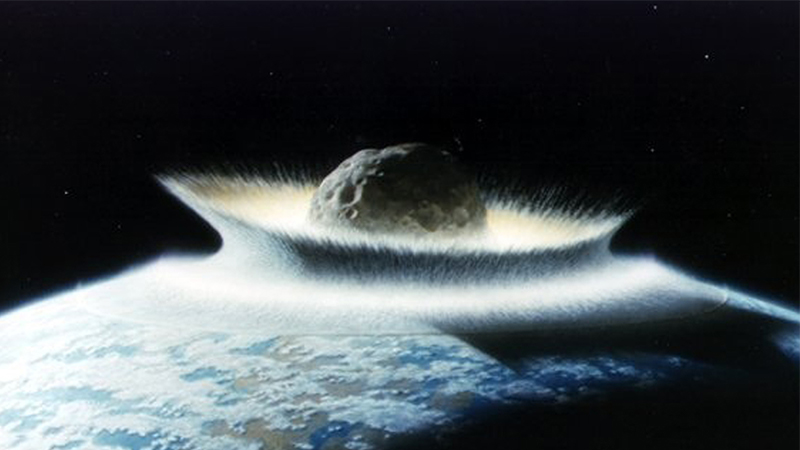Stay Up to Date
Submit your email address to receive the latest industry and Aerospace America news.
A panel of NASA and Energy Department scientists is calling for an internationally coordinated effort to build a spacecraft that could alter the path of an asteroid or comet with its own kinetic energy or a nuclear explosion, and thus avoid a possible collision with Earth.
The goal is to have an interceptor at the ready, instead of starting work on it once scientists declare an object to be on a collision course. It generally takes about five years for NASA and its contractors to design, build and launch a large, reliable spacecraft. It is unlikely that scientists will be able to give policymakers that much warning that an incoming object has an extremely high probability of hitting Earth. That was the message from NASA and the Energy Department’s Los Alamos National Laboratory during a Dec. 12 press conference at the American Geophysical Union conference in San Francisco.
The interceptor spacecraft could be placed in storage and tested periodically to ensure it would be ready for launch if a threat is detected. Although it might never be needed, the interceptor would be a valuable tool to have on hand in case an incoming object posed a serious risk to people on Earth, says Joseph Nuth, senior scientist for “primitive bodies” at NASA’s Goddard Space Flight Center in Maryland.
Catherine Plesko, a research scientist in applied physics at Los Alamos likens the idea to doing homework before a final exam. “If you look at life as an academic class, we don’t want to be doing our calculations when we know something is coming,” Plesko says. “To me that’s finals week, when we don’t have any more time to study and we need to make a decision and go forward.”
With backing from NASA’s Planetary Defense Coordination Office established in 2016, Los Alamos researchers are using supercomputers to model various approaches to diverting asteroids or comets. “A kinetic impactor can be very effective if you have long enough lead time: decades to centuries,” says Robert Weaver Los Alamos Laboratory Fellow. “If, in fact, the lead time is extremely short, there is really only one option: nuclear explosion.”
A kinetic interceptor would act like a giant cannon ball, striking an asteroid or comet and diverting it. Researchers do not envision using a nuclear blast to destroy an asteroid or comet. Instead, they recommend detonating a nuclear warhead close enough to an object to heat its surface and vaporize some of its material, which would cause the main body of the object to change course.
NASA does not currently have any funding for this type of mission, which might carry a price tag of roughly $250 to $300 million, Nuth says. In addition to building the interceptor, the researchers suggest NASA build and place in storage a small spacecraft to obtain detailed information on a threatening object’s size, shape, spin axis and rotation rate. That type of mission might cost somewhere in the neighborhood of $125 million, Nuth says.
Before NASA could build an interceptor or asteroid reconnaissance spacecraft, it would need congressional authorization and funding as well as the support of the international community. The agency could not launch a nuclear weapon or kinetic kill vehicle without international backing because either approach would violate multiple international treaties, Nuth says.
About Debra Werner
A longtime contributor to Aerospace America, Debra is also a correspondent for Space News on the West Coast of the United States.
Stay Up to Date
Submit your email address to receive the latest industry and Aerospace America news.




